Smart Appliances for Efficient Integration of Solar Energy: A Dutch Case Study of a Residential Smart Grid Pilot
Abstract
:1. Introduction
2. Materials and Methods
2.1. PMC Configuration
2.2. Household Characteristics
2.3. Energy Tariffs
- 11.5 c€/kWh for 1000–2500 kWh
- 18.7 c€/kWh for 2500–5000 kWh
- 22.3 c€/kWh for 5000–15000 kWh
2.4. Data Processing and Equations
3. Results
3.1. Electricity Consumption and Production Characteristics of PMC Households
3.2. Monthly and Weekly Energy Balance of the Households
3.3. Flexibility with Smart Appliances
4. Discussion
4.1. PV and µ-CHP: Electricity Production
4.2. Self Sufficiency
4.3. Energy Bill
4.4. Flexibility and Smart Washing Machine and Dishwasher
5. Conclusions
Author Contributions
Funding
Acknowledgments
Conflicts of Interest
Disclaimer
References
- van Geenhuizen, M.; Schoonman, J.; Reinders, A. Diffusion of Solar Energy Use in the Built Environment Supported by New Design. J. Civ. Eng. Archit. 2014, 8, 253–260. [Google Scholar] [CrossRef]
- Campbell, M. The Economics of PV Systems. In Photovoltaic Solar Energy; Reinders, A., Verlinden, P., van Sark, W., Freundlich, A., Eds.; John Wiley & Sons Ltd.: Chichester, UK, 2017; pp. 621–633. ISBN 978-1-118-92749-6. [Google Scholar]
- Reinders, A.; Verlinden, P.; van Sark, W.; Freundlich, A. Photovoltaic Solar Energy: From Fundamentals to Applications; John Wiley & Sons Ltd.: Chichester, West Sussex, UK; Hoboken, NJ, USA, 2017; ISBN 978-1-118-92746-5. [Google Scholar]
- Quintero Pulido, D.; Hoogsteen, G.; ten Kortenaar, M.; Hurink, J.; Hebner, R.; Smit, G. Characterization of Storage Sizing for an Off-Grid House in the US and the Netherlands. Energies 2018, 11, 265. [Google Scholar] [CrossRef]
- Schram, W.L.; Lampropoulos, I.; van Sark, W.G.J.H.M. Photovoltaic systems coupled with batteries that are optimally sized for household self-consumption: Assessment of peak shaving potential. Appl. Energy 2018, 223, 69–81. [Google Scholar] [CrossRef]
- Hoogvliet, T.W.; Litjens, G.B.M.A.; van Sark, W.G.J.H.M. Provision of regulating- and reserve power by electric vehicle owners in the Dutch market. Appl. Energy 2017, 190, 1008–1019. [Google Scholar] [CrossRef]
- AlSkaif, T.; Schram, W.; Litjens, G.; van Sark, W. Smart charging of community storage units using Markov chains. In Proceedings of the Innovative Smart Grid Technologies Conference Europe, Torino, Italy, 26–29 September 2007; IEEE: Torino, Italy, 2017; pp. 1–6. [Google Scholar]
- Peters, J.F.; Baumann, M.; Zimmermann, B.; Braun, J.; Weil, M. The environmental impact of Li-Ion batteries and the role of key parameters—A review. Renew. Sustain. Energy Rev. 2017, 67, 491–506. [Google Scholar] [CrossRef]
- Kabalci, E. Power System Flexibility and Resiliency. In Power Systems Resilience; Mahdavi Tabatabaei, N., Najafi Ravadanegh, S., Bizon, N., Eds.; Springer International Publishing: Cham, Switzerland, 2019; pp. 81–100. ISBN 978-3-319-94441-8. [Google Scholar]
- Eid, C.; Codani, P.; Perez, Y.; Reneses, J.; Hakvoort, R. Managing electric flexibility from Distributed Energy Resources: A review of incentives for market design. Renew. Sustain. Energy Rev. 2016, 64, 237–247. [Google Scholar] [CrossRef] [Green Version]
- Lannoye, E.; Flynn, D.; O’Malley, M. Evaluation of Power System Flexibility. IEEE Trans. Power Syst. 2012, 27, 922–931. [Google Scholar] [CrossRef] [Green Version]
- Reinders, A.; Übermasser, S.; van Sark, W.; Gercek, C.; Schram, W.; Obinna, U.; Lehfuss, F.; van Mierlo, B.; Robledo, C.; van Wijk, A. An Exploration of the Three-Layer Model Including Stakeholders, Markets and Technologies for Assessments of Residential Smart Grids. Appl. Sci. 2018, 8, 2363. [Google Scholar] [CrossRef]
- Oldenbroek, V.; Verhoef, L.A.; van Wijk, A.J.M. Fuel cell electric vehicle as a power plant: Fully renewable integrated transport and energy system design and analysis for smart city areas. Int. J. Hydrogen Energy 2017, 42, 8166–8196. [Google Scholar] [CrossRef]
- Robledo, C.B.; Oldenbroek, V.; Abbruzzese, F.; van Wijk, A.J.M. Integrating a hydrogen fuel cell electric vehicle with vehicle-to-grid technology, photovoltaic power and a residential building. Appl. Energy 2018, 215, 615–629. [Google Scholar] [CrossRef]
- Salmerón Lissén, J.; Romero Rodríguez, L.; Durán Parejo, F.; Sánchez de la Flor, F. An Economic, Energy, and Environmental Analysis of PV/Micro-CHP Hybrid Systems: A Case Study of a Tertiary Building. Sustainability 2018, 10, 4082. [Google Scholar] [CrossRef]
- Beccali, M.; Ciulla, G.; Di Pietra, B.; Galatioto, A.; Leone, G.; Piacentino, A. Assessing the feasibility of cogeneration retrofit and district heating/cooling networks in small Italian islands. Energy 2017, 141, 2572–2586. [Google Scholar] [CrossRef]
- Staats, M.R.; de Boer-Meulman, P.D.M.; van Sark, W.G.J.H.M. Experimental determination of demand side management potential of wet appliances in the Netherlands. Sustain. Energy Grids Netw. 2017, 9, 80–94. [Google Scholar] [CrossRef]
- Zhai, S.; Wang, Z.; Yan, X.; He, G. Appliance Flexibility Analysis Considering User Behavior in Home Energy Management System Using Smart Plugs. IEEE Trans. Ind. Electron. 2019, 66, 1391–1401. [Google Scholar] [CrossRef]
- Godina, R.; Rodrigues, E.; Pouresmaeil, E.; Matias, J.; Catalão, J. Model Predictive Control Home Energy Management and Optimization Strategy with Demand Response. Appl. Sci. 2018, 8, 408. [Google Scholar] [CrossRef]
- Weck, M.H.J.; van Hooff, J.; van Sark, W.G.J.H.M. Review of barriers to the introduction of residential demand response: A case study in the Netherlands: Barriers to residential demand response in smart grids. Int. J. Energy Res. 2017, 41, 790–816. [Google Scholar] [CrossRef]
- Smale, R.; van Vliet, B.; Spaargaren, G. When social practices meet smart grids: Flexibility, grid management, and domestic consumption in The Netherlands. Energy Res. Soc. Sci. 2017, 34, 132–140. [Google Scholar] [CrossRef]
- Guo, P.; Lam, J.C.K.; Li, V.O.K. Drivers of domestic electricity users’ price responsiveness: A novel machine learning approach. Appl. Energy 2019, 235, 900–913. [Google Scholar] [CrossRef]
- PowerMatching City A Demonstration Project of a Future Energy Infrastructure. Available online: http://powermatchingcity.nl/ (accessed on 12 April 2018).
- Geelen, D.V. Empowering End-Users in the Energy Transition: An Exploration of Products and Services to Support Changes in Household Energy Management. Ph.D. Thesis, TU Delft, Delft, The Netherlands, 2014. [Google Scholar]
- Kok, K. The powermatcher: Smart coordination for the smart electricity grid. Ph.D. Thesis, Vrije University, Amsterdam, The Netherlands, 2013. [Google Scholar]
- Gangale, F.; Vasiljevska, J.; Covrig, C.F.; Mengolini, A.; Fulli, G. Smart Grid Projects Outlook 2017: Facts; Publications Office of the European Union: Luxembourg, 2017; ISBN 978-92-79-68899-7. [Google Scholar]
- Geelen, D.; Scheepens, A.; Kobus, C.; Obinna, U.; Mugge, R.; Schoormans, J.; Reinders, A. Smart energy households’ pilot projects in The Netherlands with a design-driven approach. In Proceedings of the IEEE PES ISGT Europe 2013, Lyngby, Denmark, 6–9 October 2013; IEEE: New Jersey, NJ, USA, 2013; pp. 1–5. [Google Scholar]
- Glasgo, B.; Hendrickson, C.; Azevedo, I.M.L. Using advanced metering infrastructure to characterize residential energy use. Electr. J. 2017, 30, 64–70. [Google Scholar] [CrossRef]
- Yuce, B.; Rezgui, Y.; Mourshed, M. ANN–GA smart appliance scheduling for optimised energy management in the domestic sector. Energy Build. 2016, 111, 311–325. [Google Scholar] [CrossRef] [Green Version]
- Centraal Bureau voor de Statistiek. Elektriciteit in Nederland; Centraal Bureau voor de Statistiek: The Hague, The Netherlands, 2015. [Google Scholar]
- Kok, K.; Roossien, B.; MacDougall, P.; Van Pruissen, O.; Venekamp, G.; Kamphuis, R.; Laarakkers, J.; Warmer, C. Dynamic pricing by scalable energy management systems—Field experiences and simulation results using PowerMatcher. In Proceedings of the 2012 IEEE Power and Energy Society General Meeting, San Diego, CA, USA, 22–26 July 2012; IEEE: San Diego, CA, USA, 2012; pp. 1–8. [Google Scholar]
- Netherlands Enviromental Assessment Agency. Dutch National Energy Outlook (NEV) 2015; Netherlands Enviromental Assessment Agency: The Hague, The Netherlands, 2015. [Google Scholar]
- Geelen, D.; Brezet, H.; Keyson, D.; Boess, S. Gaming for energy conservation in households. In Proceedings of the Knowledge Collaboration & Learning for Sustainable Innovation, Delft, The Netherlands, 25–29 October 2010; TU Delft: Delft, The Netherlands, 2010; pp. 1–18. [Google Scholar]
- Bliek, F.; van den Noort, A.; Roossien, B.; Kamphuis, R.; de Wit, J.; van der Velde, J.; Eijgelaar, M. PowerMatching City, a living lab smart grid demonstration. In Proceedings of the IEEE PES, Gothenberg, Sweden, 11–13 October 2010; IEEE: Gothenberg, Sweden, 2010; pp. 1–8. [Google Scholar]
- Pakula, C.; Stamminger, R. Electricity and water consumption for laundry washing by washing machine worldwide. Energy Effic. 2010, 3, 365–382. [Google Scholar] [CrossRef]
- Stamminger, R.; Broil, G.; Pakula, C.; Jungbecker, H.; Braun, M.; Rüdenauer, I.; Wendker, C. Synergy Potential of Smart Appliances; Report of the Smart-A Project; University of Bonn: Bonn, Germany, 2008. [Google Scholar]
- Energieonderzoek Centrum Nederland. Energie Trends 2012; ECN: Petten, The Netherlands, 2012. [Google Scholar]
- Centraal Bureau voor de Statistiek. Available online: https://www.cbs.nl/en-gb/news/2014/16/energy-consumption-marginally-down-in-2013 (accessed on 7 December 2018).
- Schwartz, D.; Fischhoff, B.; Krishnamurti, T.; Sowell, F. The Hawthorne effect and energy awareness. Proc. Natl. Acad. Sci. USA 2013, 110, 15242–15246. [Google Scholar] [CrossRef] [PubMed] [Green Version]
- Reinders, A.; de Respinis, M.; van Loon, J.; Stekelenburg, A.; Bliek, F.; Schram, W.; van Sark, W.; Esteri, T.; Uebermasser, S.; Lehfuss, F.; et al. Co-evolution of smart energy products and services: A novel approach towards smart grids. In Proceedings of the 2016 Asian Conference on Energy, Power and Transportation Electrification (ACEPT), Singapore, 25–27 October 2016; IEEE: New Jersey, NJ, USA, 2016; pp. 1–6. [Google Scholar]
- Geelen, D.; Vos-Vlamings, M.; Filippidou, F.; van den Noort, A.; van Grootel, M.; Moll, H.; Reinders, A.; Keyson, D. An end-user perspective on smart home energy systems in the PowerMatching City demonstration project. In Proceedings of the IEEE PES ISGT Europe 2013, Lyngby, Denmark, 6–9 October 2013; IEEE: Lyngby, Denmark, 2013; pp. 1–5. [Google Scholar]
- Obinna, U.; Joore, P.; Wauben, L.; Reinders, A. Preferred attributes of home energy management products for smart grids—Results of a design study and related user survey. J. Des. Res. 2018, 16, 99–130. [Google Scholar] [CrossRef]
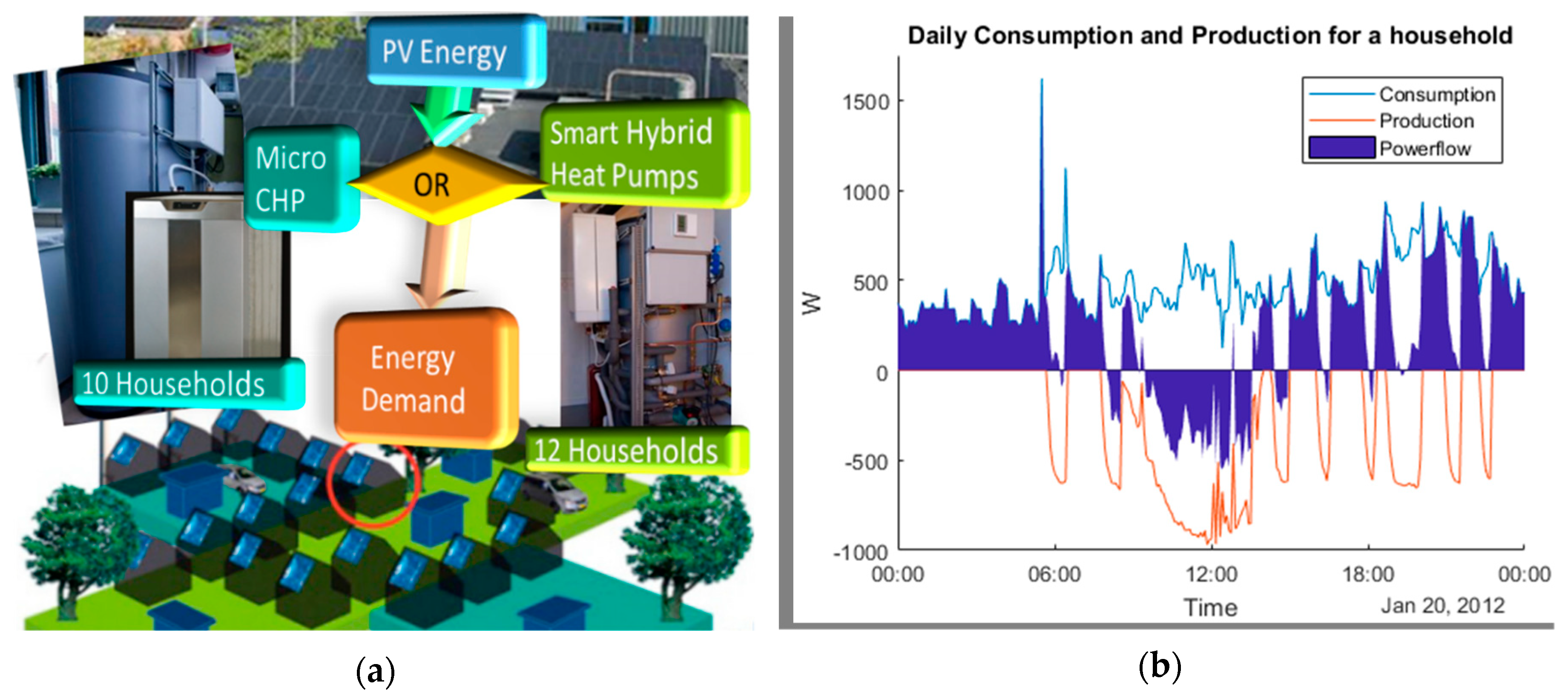
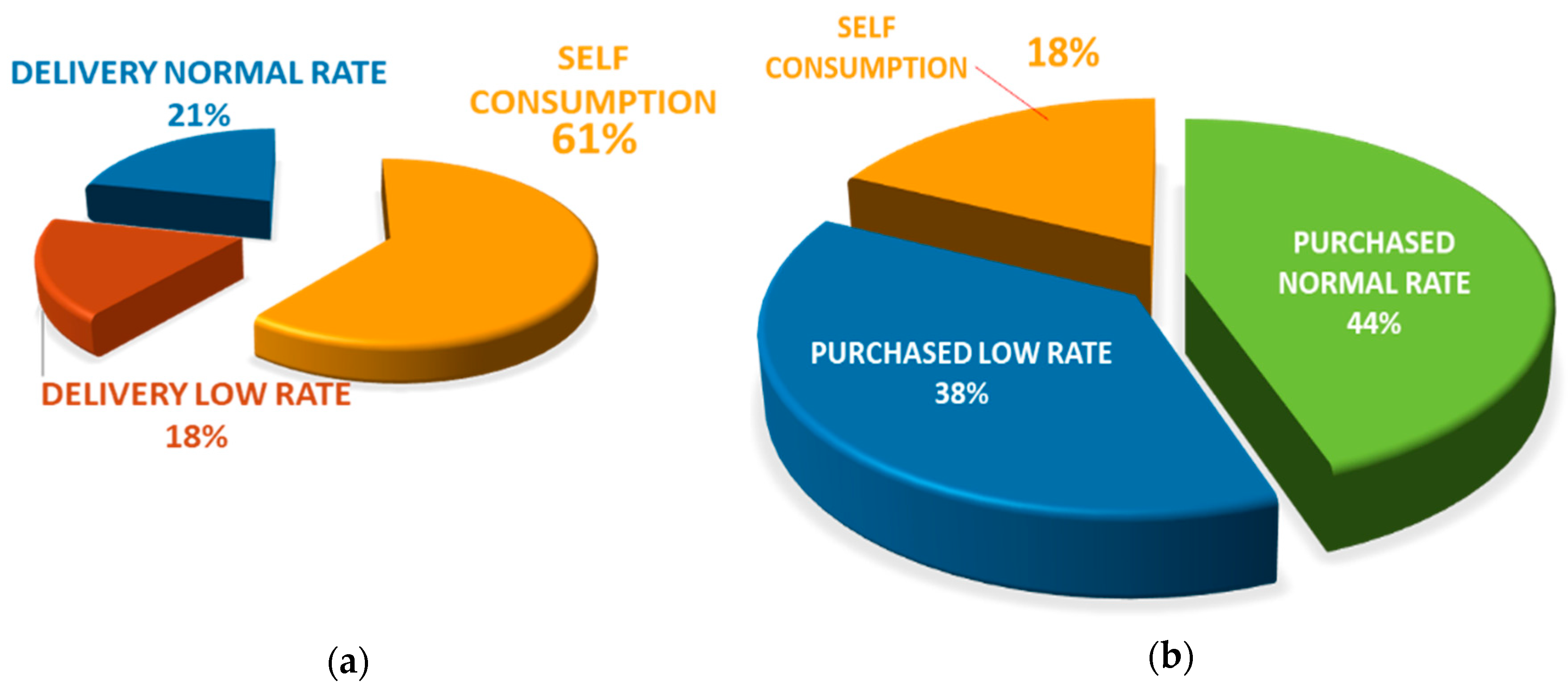
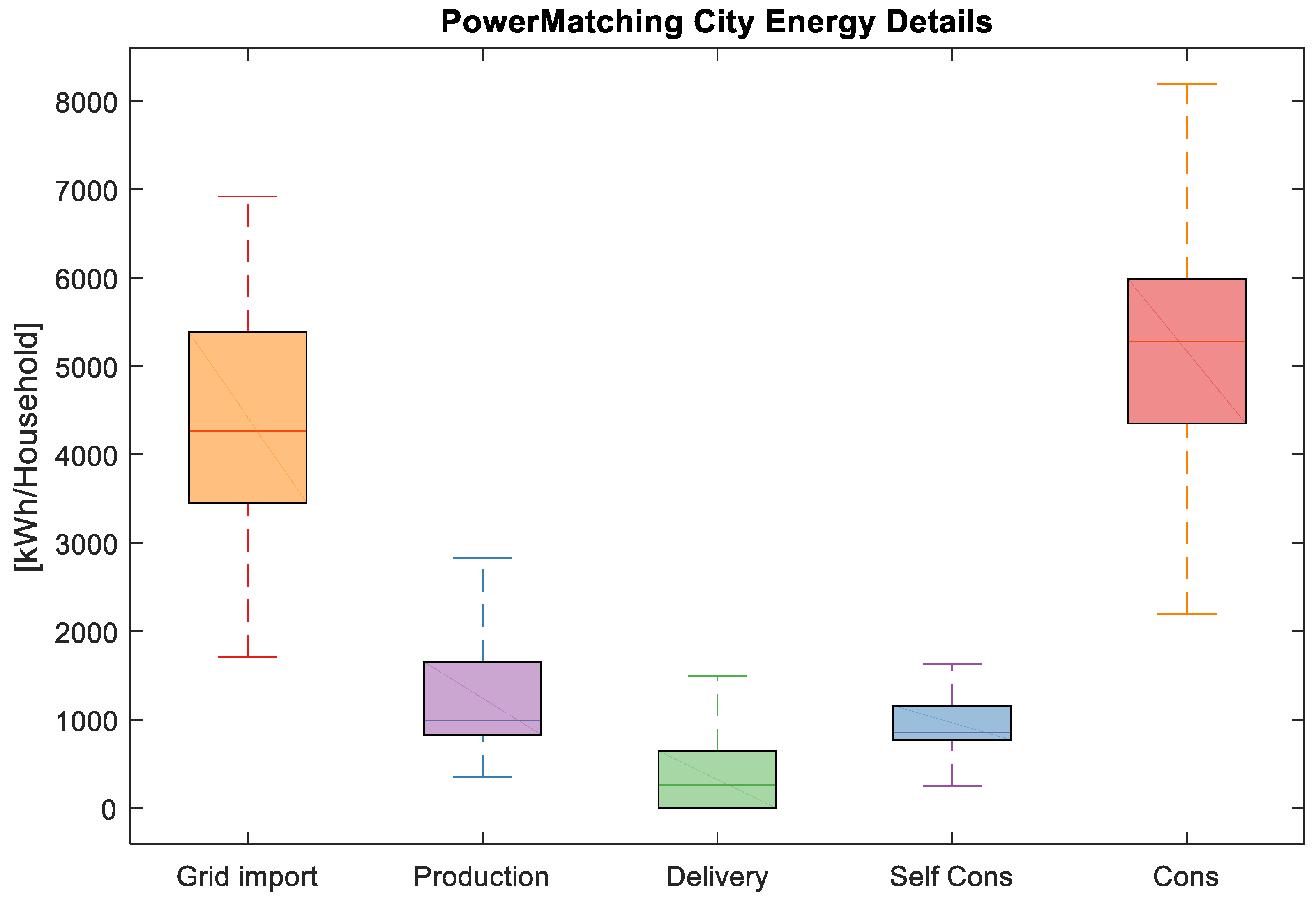
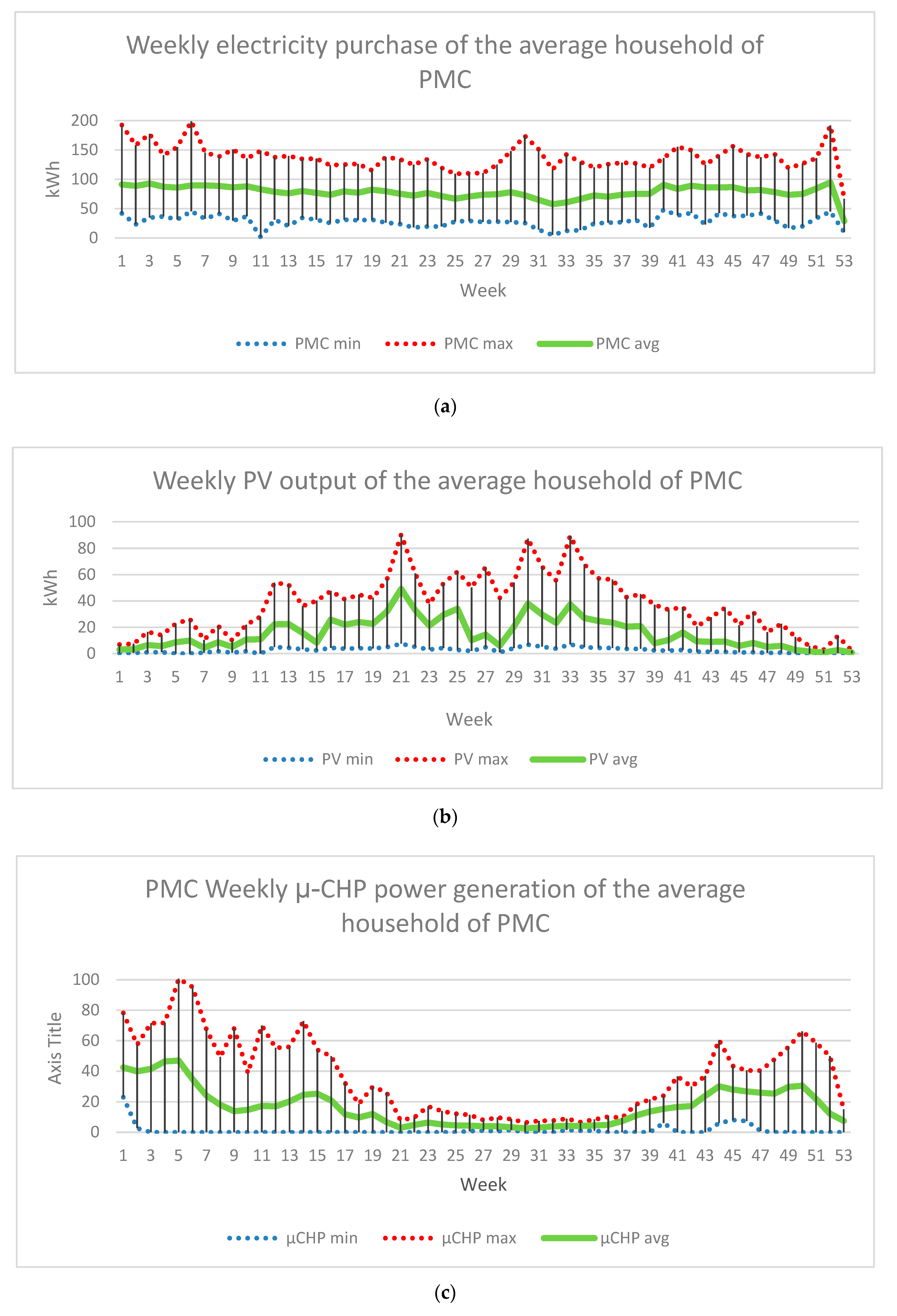
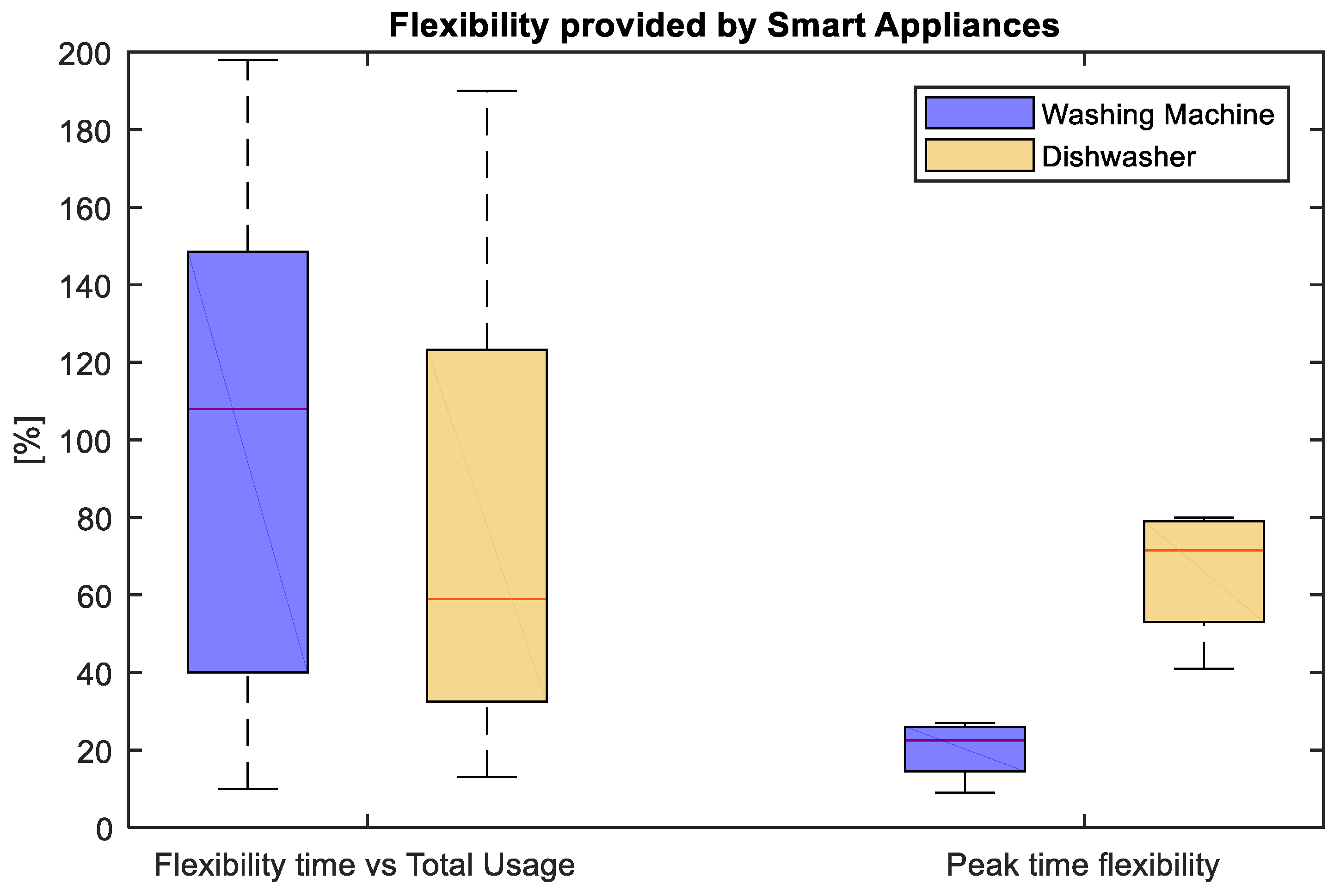
| Distributed Energy Sources | Details of PV Systems | PV Production | Smart App. | |
|---|---|---|---|---|
| 10 Households with µ-CHP (1kW Electric, 6 KW Thermal) | 2 Households: Rooftop PV | 500 Wp, 4 m2 | 150 kWh | No |
| 2200 Wp, 18.7 m2 | 1835 kWh | Yes | ||
| 8 Households: Virtual PV | 1590 Wp, 11 m2 (on average per household) | 880 kWh (on average per household) | 4 Households out of 8 | |
| 12 Households with Hybrid Heat Pump (4.5 kWh Thermal) | 2 Households: Rooftop PV | 500 Wp,4 m2 | 350 kWh | Yes |
| 3840 Wp, 16 m2 | 1858 kWh | No | ||
| 10 Households: Virtual PV | 1590 Wp, 11 m2 (on average per household) | 880 kWh (on average per household) | 5 Households out of 10 | |
| PMC Households | The Netherlands | |||
|---|---|---|---|---|
| Household Size | Number of Households | Distribution (%) | Number of Households | Distribution (%) |
| 1 person | 2 | 9% | 2,761,764 | 37 |
| 2 persons | 5 | 22% | 2,455,421 | 33 |
| 3 persons | 2 | 9% | 909,274 | 12 |
| 4 persons | 7 | 31% | 971,486 | 13 |
| 5 persons | 2 | 9% | 414,879 | 6 |
| Unknown | 4 | 18% | - | - |
| Total | 22 | 100% | 7,512,824 | 100% |
| Real-Time | Cumulative | |
|---|---|---|
| Power flow (Pf) | EP − ED | |
| Electricity purchase (Ep) | Pf (t) > 0, rate according to t (see II.C) | EP_l.r + EP_n.r. |
| Electricity delivery (Ed) | Pf (t) < 0, rate according to t (see II.C) | ED_l.r + ED_n.r. |
| Electricity generated (Eg) | PPV(t) + Pµ-CHP(t) | EPV + Eµ-CHP |
| Self-consumption (Es) | PPV(t) + Pµ-CHP(t) − │Pf (t) < 0│ | EG − ED |
| Electricity consumption (Ec) | │Pf (t) > 0│ + PPV(t) + Pµ-CHP (t) − │Pf (t) < 0│ | EP + ES |
| Smart appliance’s activation time (S) | Si(t) = 1, smart appliance running Si(t) = 0, smart appliance is not active | |
| Smart appliance’s flexibility time (F) | Fi(t) = 1, smart appliance is waiting to run Fi(t) = 0, smart appliance is not available for flexibility | |
| Smart appliance’s number of cycles | Si(t)/Average cycle time | |
| Smart appliance’s electricity consumption | Number of cycle × Average consumption per cycle | |
| Heat pump electricity consumption | Php(t) |
| kWh/HH | Min | Average | Max | |
|---|---|---|---|---|
| Production | Delivery Low rate | 144 | 350 | 937 |
| Delivery Normal Rate | 32 | 247 | 427 | |
| µ-CHP | 292 | 950 | 1396 | |
| PV | 152 | 866 | 1858 | |
| Total Production | 350 | 1277 | 2832 | |
| Consumption | Purchase Low rate | 712 | 1997 | 3587 |
| Purchase Normal rate | 964 | 2291 | 3332 | |
| Self-Consumption | 247 | 935 | 1626 | |
| Total Consumption | 2193 | 5183 | 8188 |
| kWh/HH | Consumption | Production | Grid Import * | ||||
|---|---|---|---|---|---|---|---|
| Month | Min. | Mean | Max | PV | µ-CHP | Only PV | PV + µ-CHP |
| Jan | 167 | 516 | 824 | 27 | 217 | 489 | 271 |
| Feb | 148 | 466 | 633 | 28 | 90 | 438 | 347 |
| Mar | 89 | 479 | 561 | 66 | 69 | 413 | 344 |
| Apr | 152 | 347 | 645 | 96 | 92 | 251 | 159 |
| May | 99 | 346 | 512 | 137 | 26 | 209 | 183 |
| June | 96 | 326 | 473 | 95 | 20 | 231 | 211 |
| July | 121 | 330 | 708 | 109 | 17 | 221 | 205 |
| Aug | 55 | 296 | 509 | 113 | 17 | 183 | 166 |
| Sep | 149 | 321 | 637 | 83 | 52 | 238 | 186 |
| Oct | 146 | 529 | 570 | 44 | 88 | 485 | 398 |
| Nov | 146 | 520 | 579 | 25 | 106 | 495 | 389 |
| Dec | 125 | 561 | 640 | 9 | 102 | 552 | 451 |
| PowerMatching City (2012) | Comparing to | |||
|---|---|---|---|---|
| Smart Appliance Type | Data Fraction (%) | Annual Energy Consumption | Dutch Average [6] (%) | EU-15 Average [7] (%) |
| Dishwasher | 97.8% | 215.7 kWh | N.A. | −8% |
| Washing Machine | 95.2% | 130.8 kWh | −10% | −25% |
© 2019 by the authors. Licensee MDPI, Basel, Switzerland. This article is an open access article distributed under the terms and conditions of the Creative Commons Attribution (CC BY) license (http://creativecommons.org/licenses/by/4.0/).
Share and Cite
Gercek, C.; Reinders, A. Smart Appliances for Efficient Integration of Solar Energy: A Dutch Case Study of a Residential Smart Grid Pilot. Appl. Sci. 2019, 9, 581. https://doi.org/10.3390/app9030581
Gercek C, Reinders A. Smart Appliances for Efficient Integration of Solar Energy: A Dutch Case Study of a Residential Smart Grid Pilot. Applied Sciences. 2019; 9(3):581. https://doi.org/10.3390/app9030581
Chicago/Turabian StyleGercek, Cihan, and Angèle Reinders. 2019. "Smart Appliances for Efficient Integration of Solar Energy: A Dutch Case Study of a Residential Smart Grid Pilot" Applied Sciences 9, no. 3: 581. https://doi.org/10.3390/app9030581
APA StyleGercek, C., & Reinders, A. (2019). Smart Appliances for Efficient Integration of Solar Energy: A Dutch Case Study of a Residential Smart Grid Pilot. Applied Sciences, 9(3), 581. https://doi.org/10.3390/app9030581






